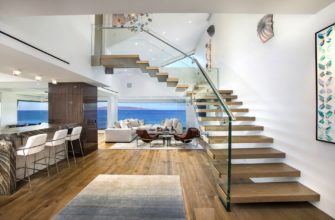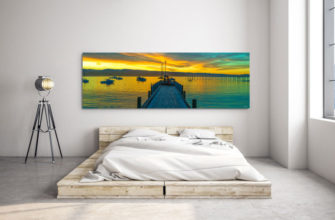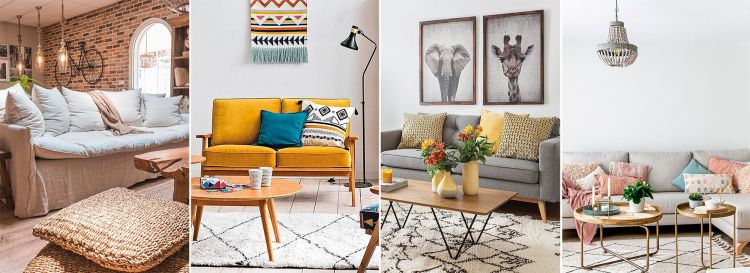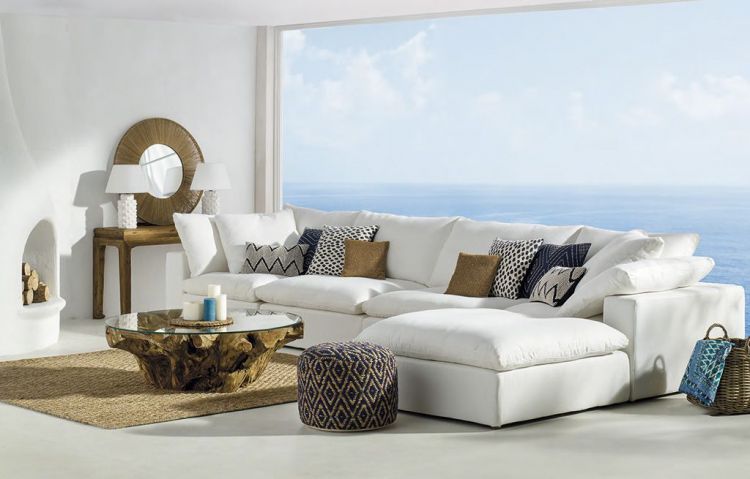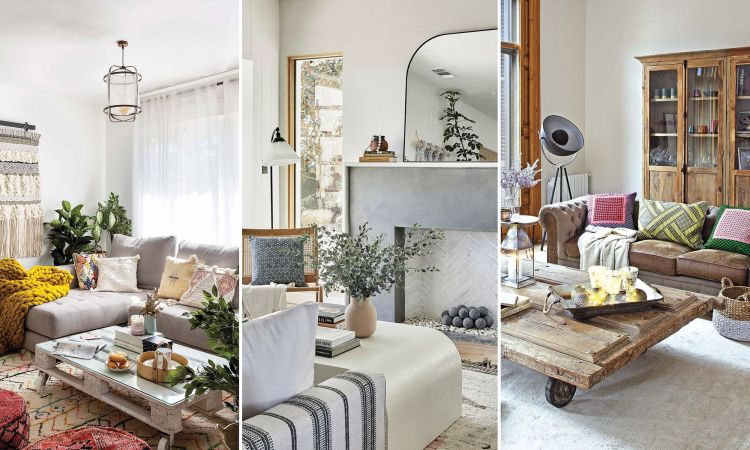Minimalism in modern interior design beckons with its promise of tranquility. This article explores the essence of minimalism, guiding you through creating a serene, clutter-free living space that embodies simplicity and style.
- The Essence of Minimalism
- Minimalist Design Elements
- Achieving Minimalist Serenity
- Balancing Minimalism with Personal Style
- Infusing Personal Style into Minimalist Design
- Incorporating Meaningful Items without Clutter
- Choosing Decor Reflective of Personality and Aesthetic Preferences
- Sustainability in Minimalism
- Minimalism and Sustainable Living
- Tips for Choosing Eco-Conscious Materials and Products
- Sustainable Decluttering
- Conclusion
The Essence of Minimalism
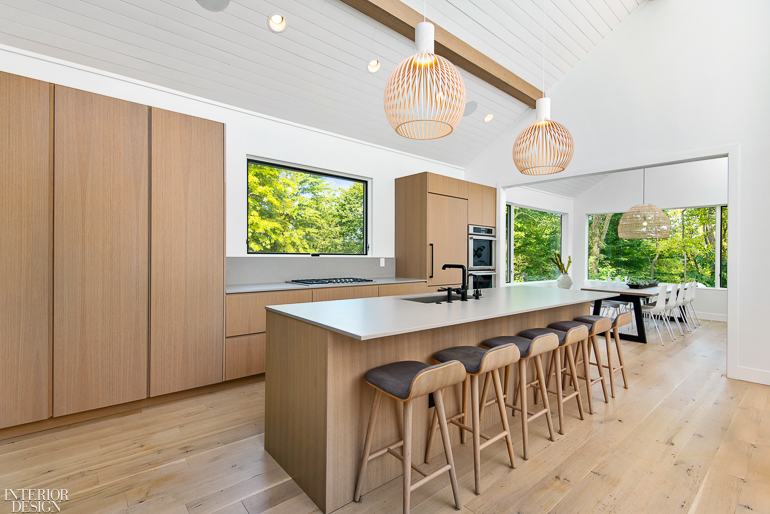
Minimalism in interior design is a philosophy that embraces simplicity, functionality, and the elimination of excess ornamentation. Minimalism is an aesthetic approach that focuses on reducing a space to its essential elements. It involves clean lines, a limited color palette, and a deliberate choice of decor to create an uncluttered and harmonious environment.
Minimalism finds its roots in the early 20th century, primarily as an art movement. Pioneered by artists such as Piet Mondrian and Kazimir Malevich, it aimed to strip away unnecessary elements and emphasize the purity of form and color. Over time, this artistic movement evolved to influence architecture and interior design. More about interesting design ideas in the interior you can find on homelights.org, here you can also get further details and photos in a minimalistic style.
The philosophy of “less is more” lies at the heart of minimalism. In modern design, this principle is manifested through the following key principles:
- Simplicity: Minimalist interiors are characterized by clean, uncomplicated lines and a clutter-free environment.
- Functionality: Every element in a minimalist space serves a purpose. Furniture and decor are not merely ornamental but are chosen for their practicality.
- Limited color palette: Neutral colors such as whites, grays, and muted earth tones are predominant, creating a sense of calm and serenity.
- Negative space: Empty spaces are deliberately incorporated to give breathing room and draw attention to the essential elements.
- Quality over quantity: Minimalism prioritizes high-quality materials and craftsmanship over excessive embellishments.
These principles set the stage for creating a minimalist interior that not only celebrates simplicity but also exudes timeless elegance and a sense of serenity.
Minimalist Design Elements
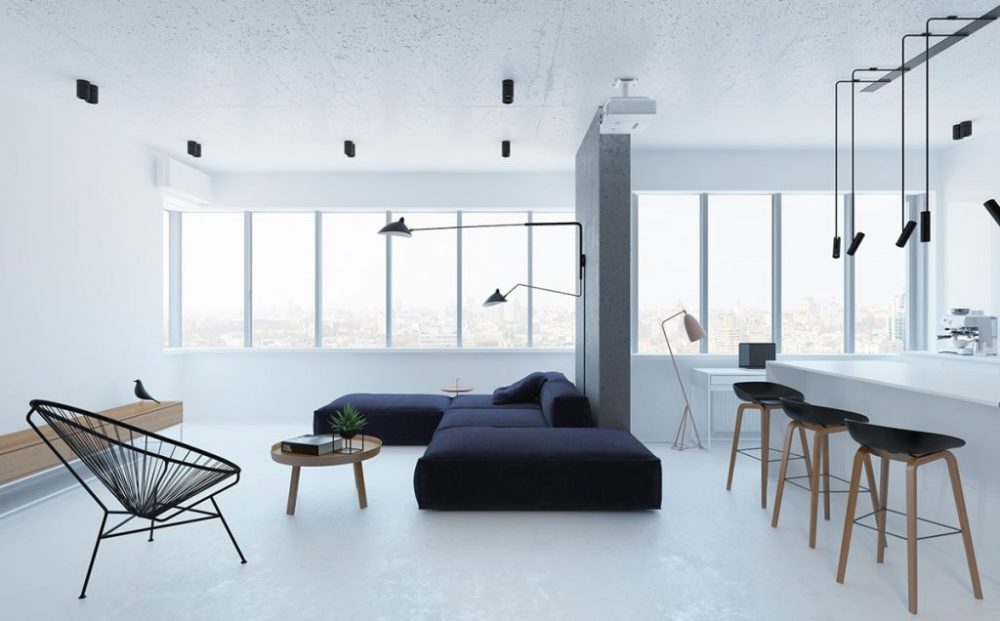
Minimalist interior design hinges on several fundamental elements, each carefully chosen to create a serene and uncluttered living space. Let’s delve deeper into these crucial components:
Color:
- The Power of Neutrals: Minimalism’s love affair with neutral color palettes, including whites, soft grays, beige, and muted earth tones, sets the stage for a tranquil environment. Neutrals evoke a sense of purity and simplicity, allowing the eye to rest and the mind to find solace.
- Monochromatic Schemes: Monochromatic color schemes, where a single color in varying shades is used, can add depth and sophistication to the space without compromising the minimalist essence.
Furniture:
- Clean Lines and Simplicity: Minimalist furniture is characterized by clean lines and a lack of ornate detailing. The emphasis is on simplicity, with designs that avoid unnecessary embellishments.
- Functional Prioritization: Every piece of furniture serves a purpose. It’s not just about aesthetics; it’s about functionality. Multi-purpose furniture, such as a sofa with built-in storage or a dining table that doubles as a workspace, is a hallmark of minimalist design.
Space:
- Declutter and Simplify: Minimalism at its core is about removing excess. Clear surfaces and a lack of unnecessary decoration result in an uncluttered space.
- Effective Storage Solutions: Minimalist design often incorporates clever storage solutions that keep items out of sight, such as built-in shelving, hidden cabinets, and storage under beds or sofas.
- Strategic Furniture Placement: Furniture is thoughtfully arranged to maximize space. Open floor plans and negative space are common features, creating a sense of freedom and flow.
Materials:
- Natural Materials: Minimalism places great importance on natural materials like wood, stone, and metal. These materials provide warmth and authenticity to the space.
- High-Quality Craftsmanship: Minimalist interiors often feature well-crafted, durable items that stand the test of time. Quality over quantity is the guiding principle.
- Sustainability: In modern minimalist design, there’s a growing emphasis on sustainability. Materials are chosen with environmental impact in mind, aligning with eco-conscious values.
Lighting:
- Natural Light: Minimalism welcomes and maximizes natural light. Large windows and the use of light-colored surfaces help make the most of daylight, which creates a sense of well-being and spaciousness.
- Minimalist Light Fixtures: Lighting fixtures in minimalist design are often simple and unobtrusive. They blend seamlessly with the overall design, providing illumination without becoming focal points. Pendant lights with clean lines and recessed lighting are popular choices.
By embracing these detailed elements of minimalist design, you can curate a living space that is not only aesthetically pleasing but also a haven of serenity and simplicity. Each component plays a vital role in creating a harmonious environment where every element has a purpose and nothing is excessive.
Achieving Minimalist Serenity
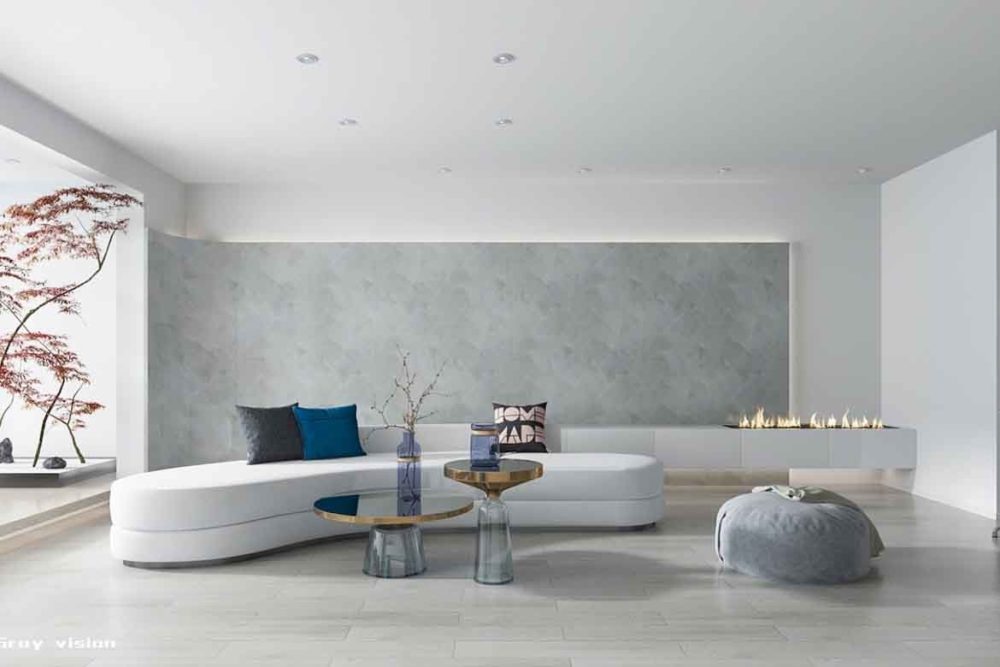
Creating a minimalist haven in your home involves practical steps and choices that embody simplicity and serenity. Here, we offer actionable tips to help you achieve this state of calm:
Decluttering:
- The 30-Day Challenge: Start with a 30-day challenge, where you declutter one area of your home each day. Set aside items you no longer need or love and consider donating or selling them.
- The One-In-One-Out Rule: For every new item you bring into your home, remove an existing one. This helps maintain a balanced and clutter-free environment.
- Embrace Minimal Wardrobes: In your closets, practice capsule wardrobes, focusing on a small selection of quality clothing pieces that can be mixed and matched.
Functional Furniture:
- Multi-Purpose Pieces: Opt for furniture that serves multiple functions, such as a sofa bed or a coffee table with storage.
- Choose Quality Over Quantity: Invest in a few high-quality pieces that align with your aesthetic and lifestyle, rather than filling your space with an abundance of furniture.
- Modular and Customized Furniture: Consider customizable and modular furniture that adapts to your needs as they change over time.
Storage Solutions:
- Hidden Storage: Incorporate furniture with hidden storage compartments, such as ottomans with under-lid storage or beds with drawers underneath.
- Floating Shelves: Install floating shelves to keep items off the floor and create a sense of openness while displaying your favorite decor.
- Vertical Storage: Utilize vertical space with tall bookshelves or storage units to maximize storage capacity without overwhelming the room.
Open Layout:
- Knock Down Walls: If possible, consider removing non-load-bearing walls to create an open floor plan that fosters a sense of airiness and connectivity.
- Zoning with Furniture: Use furniture strategically to create distinct zones in open spaces. For example, a sofa can separate the living room from the dining area.
- Minimize Visual Clutter: Choose furniture with exposed legs to maintain a feeling of openness, and avoid overly large or heavy pieces that can overpower the space.
Art and Decor:
- Less is More: When it comes to decor, adopt the “less is more” mantra. Select a few carefully chosen pieces that hold personal meaning or aesthetic value.
- Monochromatic Art: Consider monochromatic or black-and-white art to maintain a sense of simplicity. Large, single statement pieces can also serve as focal points in a minimalist room.
- Functional Decor: Decor items that serve a purpose, like mirrors for both aesthetics and functionality or potted plants that purify the air, align well with minimalist design.
By incorporating these practical tips, you can transform your living space into a minimalist sanctuary that not only reduces clutter but also elevates the serenity and functionality of your home. These strategies emphasize the essence of minimalism while reflecting your unique style and needs.
Balancing Minimalism with Personal Style
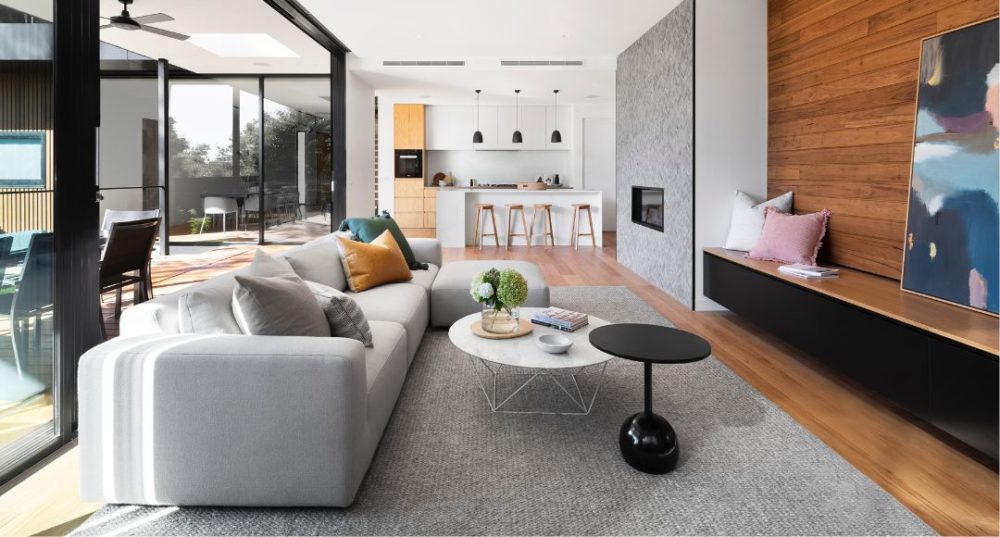
Balancing minimalism with personal style is an art that allows you to infuse your living space with individuality and meaning while preserving the core tenets of simplicity and serenity. Here, we explore the delicate balance of expressing your unique identity within a minimalist design:
Infusing Personal Style into Minimalist Design
- Select a Focal Point: Consider choosing one or two elements or pieces that embody your personal style, acting as focal points. This could be a piece of art, a distinctive piece of furniture, or a vibrant rug.
- Express through Color: If you have a particular color or palette that resonates with you, use it sparingly in your decor, such as through throw pillows, blankets, or accent pieces.
Incorporating Meaningful Items without Clutter
- Edit Thoughtfully: Keep a curated collection of items that hold personal meaning. Instead of displaying them all, rotate them periodically to avoid visual clutter.
- Create Display Areas: Designate specific areas or shelves where you can showcase your cherished items, ensuring they have their place within the minimalist environment.
Choosing Decor Reflective of Personality and Aesthetic Preferences
- Art and Decor Selection: When selecting art or decor, opt for pieces that resonate with you on a personal level. Your decor should evoke emotions and tell your story.
- Quality over Quantity: Rather than amassing numerous decor items, focus on a few high-quality pieces that truly reflect your aesthetic preferences.
In the pursuit of minimalism that complements your personal style, remember that it’s about intentional and meaningful choices. The balance between simplicity and self-expression is a unique journey for each individual, resulting in a living space that is both serene and deeply personal.
Sustainability in Minimalism
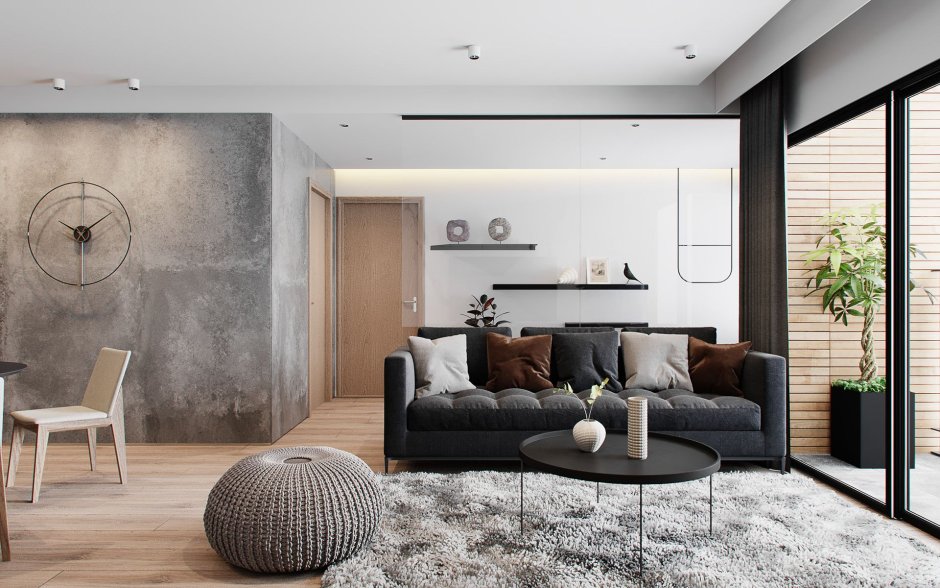
Minimalism and sustainability are natural companions, as both emphasize the importance of making deliberate, mindful choices. In this section, we delve into how minimalism aligns with sustainable and eco-friendly living, along with practical tips for incorporating eco-conscious materials into your minimalist space:
Minimalism and Sustainable Living
- Reducing Consumption: Minimalism’s core principle of “less is more” inherently reduces consumption. When you own fewer items, you’re less likely to replace or discard them, resulting in less waste.
- Resource Efficiency: A focus on quality over quantity means that items are designed to last longer, reducing the need for frequent replacements.
- Decluttering for Good: When decluttering as part of minimalism, consider donating or recycling items, rather than sending them to landfills.
Tips for Choosing Eco-Conscious Materials and Products
- Natural and Sustainable Materials: Select furniture and decor made from sustainable and natural materials such as reclaimed wood, bamboo, or recycled metals.
- Certifications: Look for products with certifications like FSC (Forest Stewardship Council) for wood, or Cradle to Cradle for sustainable manufacturing.
- Low VOC Paints: When painting your space, choose low VOC (volatile organic compound) or VOC-free paints to minimize indoor air pollution.
- Energy-Efficient Lighting: Opt for LED or energy-efficient lighting to reduce energy consumption.
- Second-Hand and Vintage: Consider purchasing second-hand or vintage items, giving them a new life while reducing the demand for new production.
Sustainable Decluttering
- Responsible Disposal: When decluttering, responsibly dispose of items that cannot be donated or recycled. Consider selling or upcycling where possible.
- Local and Handmade: Support local artisans and crafters who often use sustainable practices and materials.
- Repair and Repurpose: Before discarding damaged items, explore repair and repurposing options to extend their lifespan.
By combining minimalism with sustainability, you not only create a serene and clutter-free living space but also contribute to a more eco-friendly and responsible lifestyle. These conscientious choices not only benefit your well-being but also have a positive impact on the environment and future generations.
Conclusion
Minimalism in modern interior design simplifies living spaces, fostering serenity and functionality. Balancing personal style within this simplicity and adopting eco-conscious practices ensures a harmonious, mindful lifestyle. Minimalism is about intention, quality, and a celebration of the essentials, offering a serene sanctuary that reflects values and individuality.


